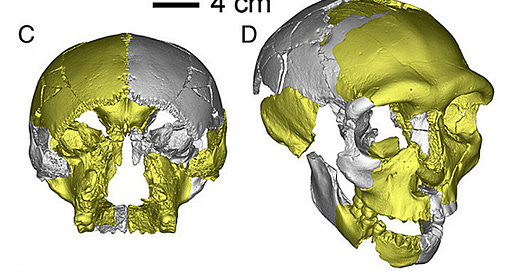A Human Lineage Discovered in China's Fossil Record?
Remains found in China may belong to third human lineage...
In the intricate tapestry of human evolution, a new thread has been woven as paleontologists from the Chinese Academy of Sciences, in collaboration with researchers from prestigious institutions worldwide, unveil evidence of a previously unknown human lineage. Their groundbreaking study, published in the Journal of Human Evolution1, delves into the remar…
Keep reading with a 7-day free trial
Subscribe to Anthropology.net to keep reading this post and get 7 days of free access to the full post archives.


